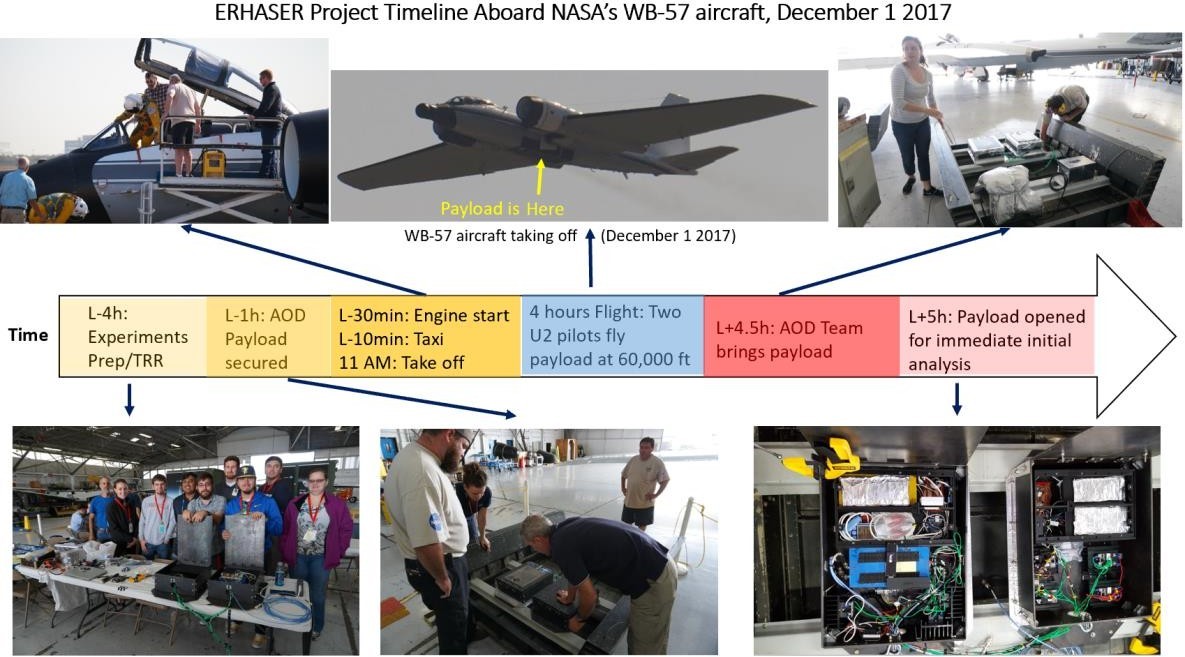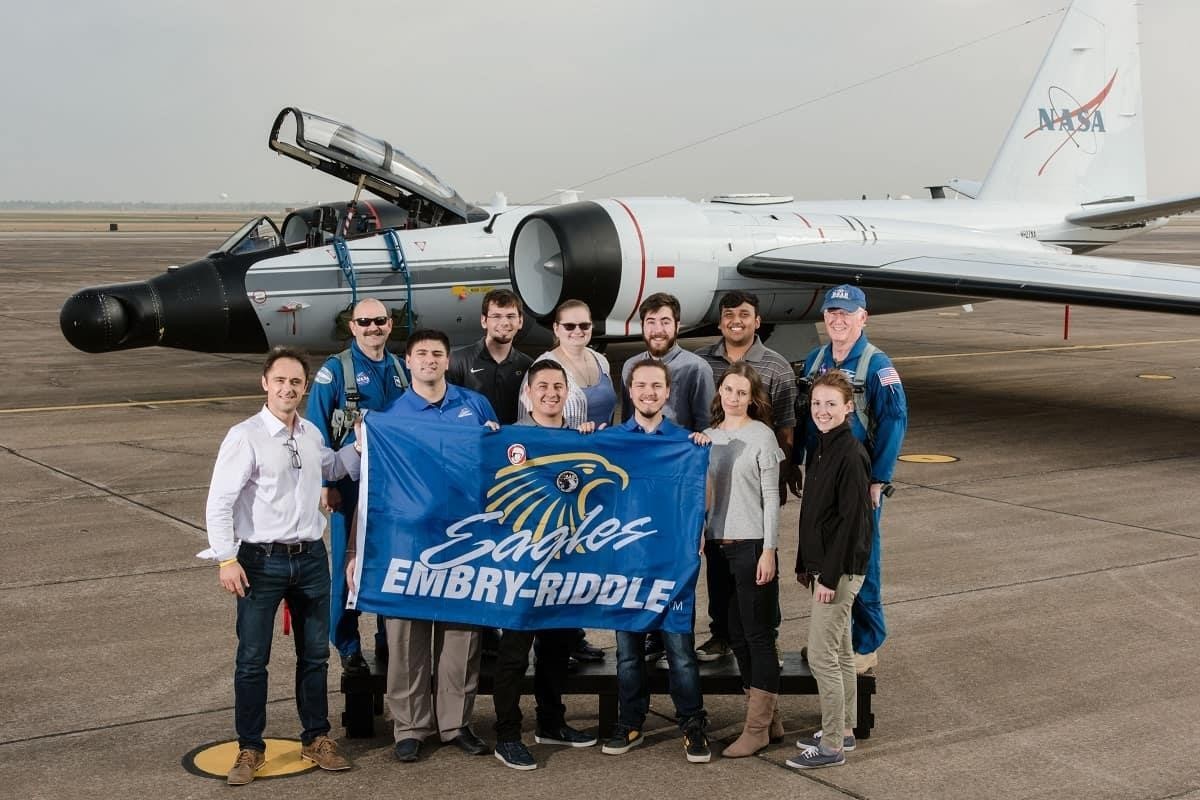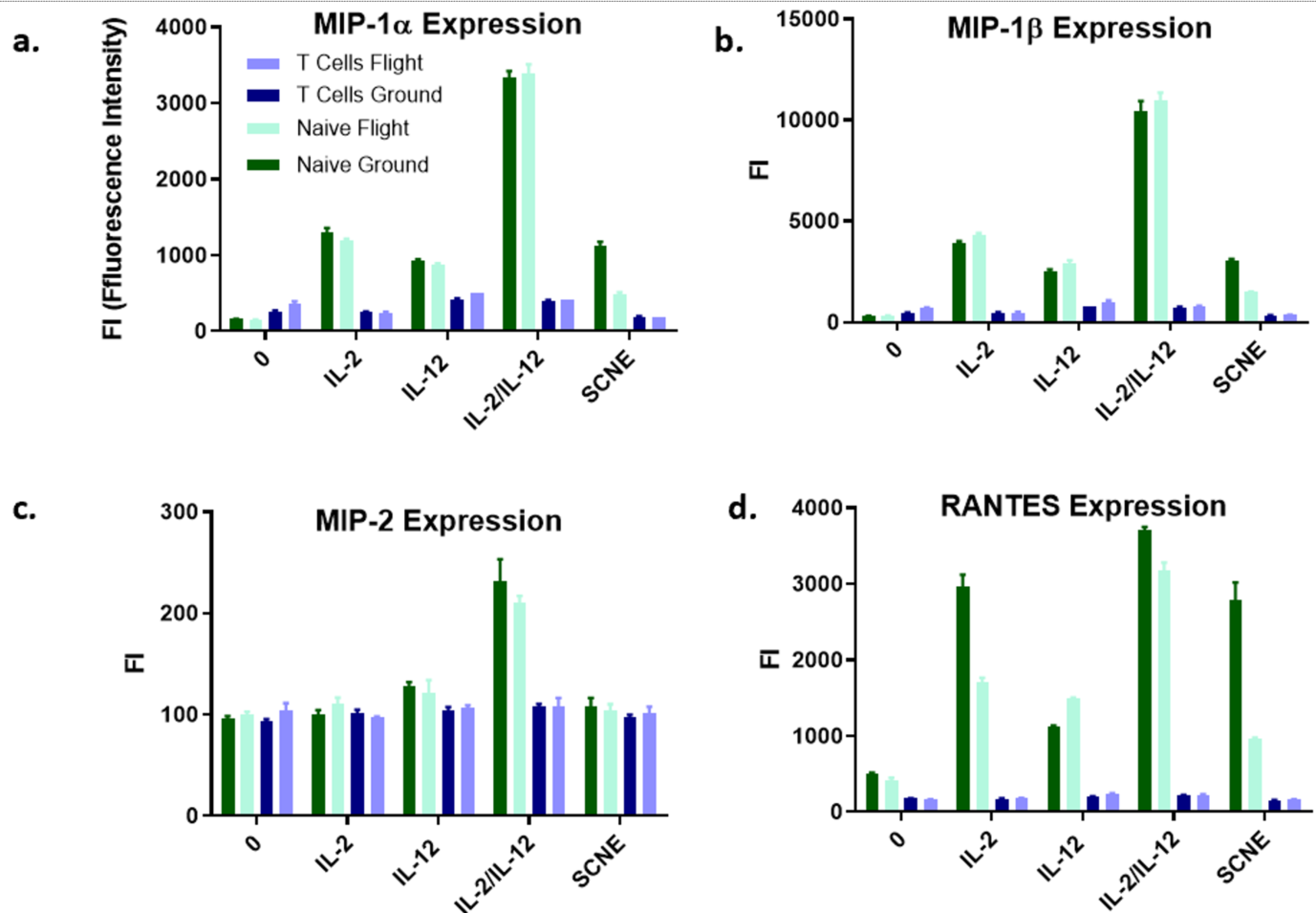NASA’s Embry-Riddle High-Altitude Science Experiment Rig (ERHASER)
PI Pedro LLanos
The purpose of this study aboard the NASA’s Airborne Science Program WB-57 aircraft was to assess the effect of radiation on murine naïve and activated T lymphocytes (T cells) and to test the effectiveness of thermal, radiation and flight tracking technology in biological scientific payloads. Flight cells were kept under proper environmental conditions by using an active thermal system, whereas the levels of radiation were measured by NASA’s Timepix radiation sensor during ascent, cruise at 60,000 feet, and descent.
Exposure to space radiation may place astronauts at significant health risks. This is an under-investigated area of research and therefore more knowledge is needed to better plan long-term space missions. We cultured cells in specific cytokines known to increase their viability and exposed them to either flight or had them as ground controls. In addition, an Automatic Dependent Surveillance-Broadcast (ADS-B) device was utilized to track the state vector of the aircraft during flight. The aims of this pilot research study were:
Aim 1: The first aim was to study the position of the aircraft using the ADS-B device for subsonic or supersonic flights through triangulation from communication nodes along the Gulf of Mexico, which had never done before. We aimed to get insights into some challenges the Federal Administration Aviation (FAA) is facing with integrating the newly emerging era of suborbital space vehicles into the National Air Space.
Aim 2: The second objective was to test the effects of radiation using the Timepix, a sensor that had flown on NASA’s Exploration Flight Test (EFT)-1 On December 5, 2014, and that had never flown before aboard this aircraft to study the radiation levels at 60,000 ft.
Aim 3: Next, we wanted to assess the radiation levels on the immune cells, also called T cells. We used both naïve and activated murine T cells, which were supplemented with cytokines IL-2 and IL-12, as well as treated with the novel supercritical CO2 extract of neem tree Azadirachta indica (SCNE). Interleukin-2 (IL-2) is a potent T cell growth factor used for T cell expansion and treatment of several types of cancer [23]. IL-12 is involved in the differentiation of naive T cells into the T helper cells. It is also known as a T cell-stimulating factor, and a promising agent in cancer immunotherapy [24]. These two cytokines facilitate their effect by targeting the immune system. We sought to investigate whether exposure to radiation and other flight stressors would have any effect on these cells, especially at the 60,000 feet, where peak galactic cosmic rays (GCR) scattering of secondary particles occurs. Given the cytokines' ability to alter the cellular processes and the role of supercritical extract as the natural compound with pluripotent properties, we wanted to test whether supplementing cells with these additives would rescue the cells of radiation damage. We performed the phenotypic analysis of the cells and assessed their ability to release cytokines.
Aim 4: The fourth objective included the development of an Environment Control Life Support System (ECLSS) NanoLab, which could be used to host and sustain the cells at the desired temperature while other variables are being tested.
Below: Timeline of the airborne research experiment.

Below left: Temperature profile during flight. Below right: Total radiation dose during flight.
Below: Example of effects of flight on the expression of cytokines of T cells and Naïve cells.
Below: ERAU team picture at NASA’s Ellington Field, Houston, Texas, 2019.

Research Dates
05/01/2017 to 12/31/2017




